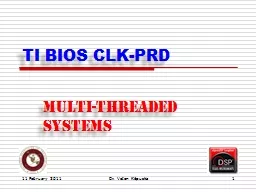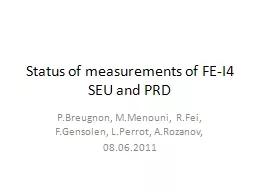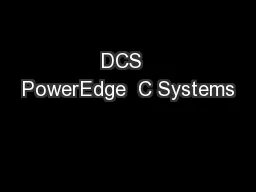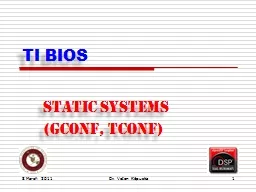PPT-TI BIOS CLK-PRD Multi-Threaded Systems
Author : liane-varnes | Published Date : 2019-11-19
TI BIOS CLKPRD MultiThreaded Systems 15 February 2018 Dr Veton Këpuska 1 Why DSPBIOS For most system developers today more time is spent on software design than
Presentation Embed Code
Download Presentation
Download Presentation The PPT/PDF document "TI BIOS CLK-PRD Multi-Threaded Systems" is the property of its rightful owner. Permission is granted to download and print the materials on this website for personal, non-commercial use only, and to display it on your personal computer provided you do not modify the materials and that you retain all copyright notices contained in the materials. By downloading content from our website, you accept the terms of this agreement.
TI BIOS CLK-PRD Multi-Threaded Systems: Transcript
Download Rules Of Document
"TI BIOS CLK-PRD Multi-Threaded Systems"The content belongs to its owner. You may download and print it for personal use, without modification, and keep all copyright notices. By downloading, you agree to these terms.
Related Documents














